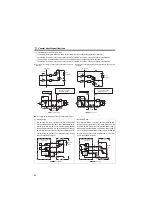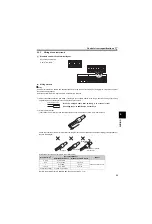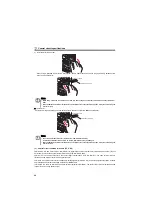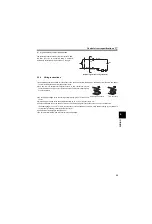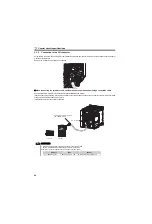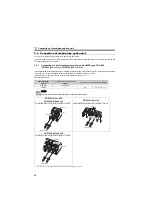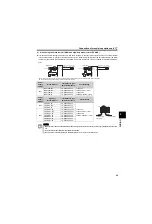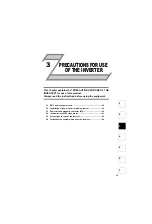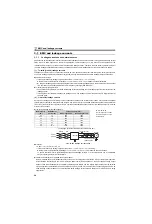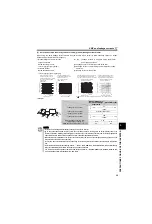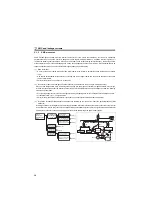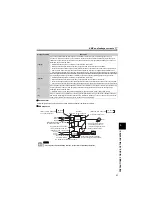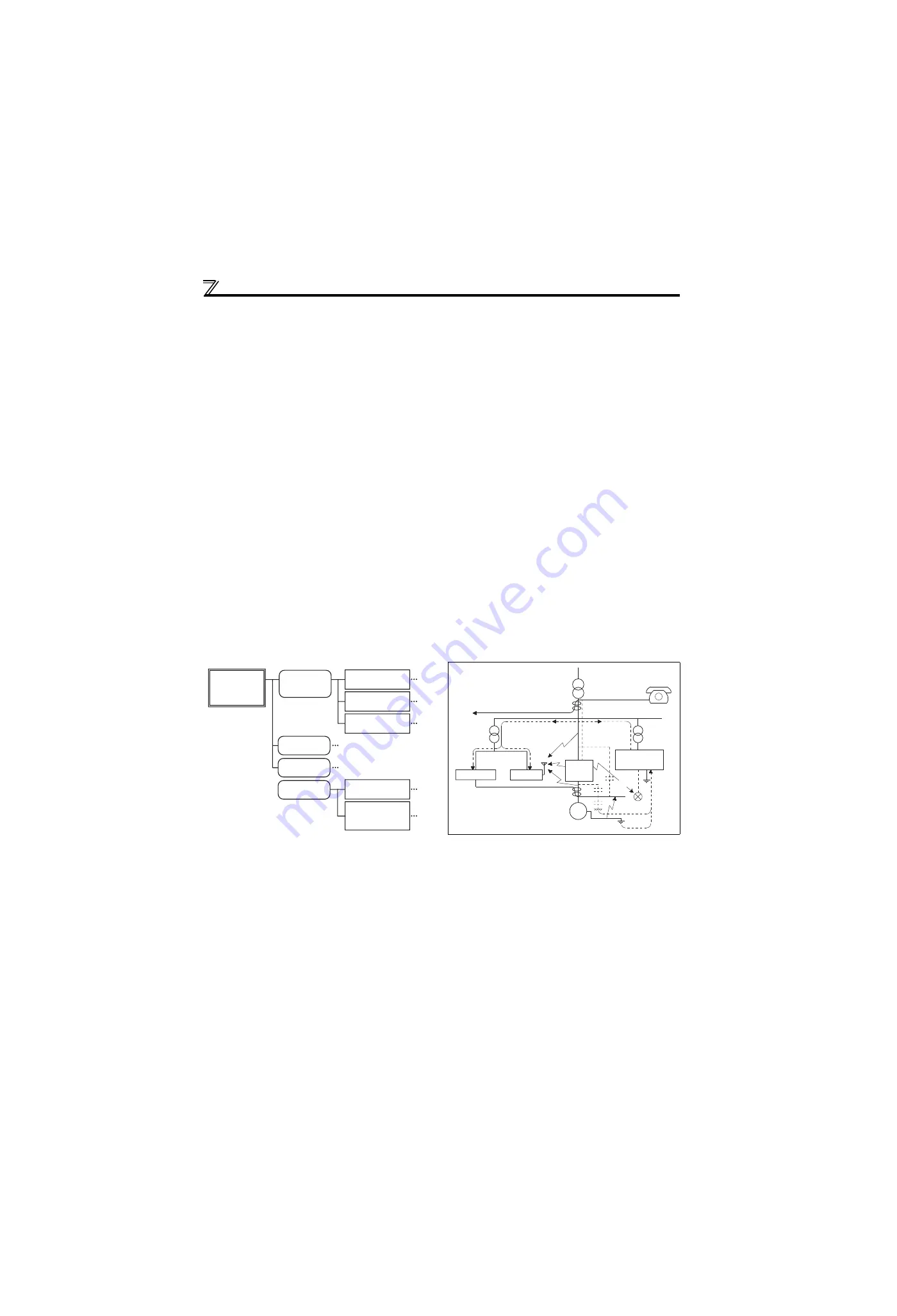
36
EMC and leakage currents
3.1.2
EMC measures
Some electromagnetic noises enter the inverter to malfunction it and others are radiated by the inverter to malfunction
peripheral devices. Though the inverter is designed to have high immunity performance, it handles low-level signals, so it
requires the following basic techniques. Also, since the inverter chops outputs at high carrier frequency, that could generate
electromagnetic noises. If these electromagnetic noises cause peripheral devices to malfunction, EMI measures should be
taken to suppress noises. These techniques differ slightly depending on EMI paths.
(1) Basic techniques
Do not run the power cables (I/O cables) and signal cables of the inverter in parallel with each other and do not bundle
them.
Use twisted shield cables for the detector connecting and control signal cables and connect the sheathes of the shield
cables to terminal SD.
Earth (Ground) the inverter, motor, etc. at one point.
(2) Techniques to reduce electromagnetic noises that enter and malfunction the inverter (Immunity measures)
When devices that generate many electromagnetic noises (which use magnetic contactors, magnetic brakes, many relays,
for example) are installed near the inverter and the inverter may be malfunctioned by electromagnetic noises, the following
measures must be taken:
Provide surge suppressors for devices that generate many electromagnetic noises to suppress electromagnetic noises.
Fit data line filters
to signal cables.
Earth (Ground) the shields of the detector connection and control signal cables with cable clamp metal.
(3) Techniques to reduce electromagnetic noises that are radiated by the inverter to malfunction peripheral devices (EMI
measures)
Inverter-generated electromagnetic noises are largely classified into those radiated by the cables connected to the inverter
and inverter main circuits (I/O), those electromagnetically and electrostatically induced to the signal cables of the peripheral
devices close to the main circuit power supply, and those transmitted through the power supply cables.
Air propagated
electromagnetic
noise
Inverter
generated
electromagnetic
noise
Electromagnetic
induction noise
Electrostatic
induction noise
Electrical path
propagated noise
Noise directly
radiated from inverter
Noise radiated from
power supply cable
Noise radiated from
motor connection cable
Noise propagated through
power supply cable
Noise from earth (ground)
cable due to leakage
current
Path 1)
Path 2)
Path 3)
Path 4), 5)
Path 6)
Path 7)
Path 8)
Instrument
Receiver
IM
Sensor
power supply
Motor
Telephone
Sensor
(1)
(2)
(3)
(3)
(8)
(7)
(5)
(7)
(4)
(6)
(1)
Inverter
Summary of Contents for FR-D700 Series
Page 11: ...VII MEMO ...
Page 23: ...12 MEMO ...
Page 57: ...46 MEMO ...
Page 262: ...258 MEMO ...
Page 276: ...272 MEMO ...
Page 287: ...283 MEMO ...
Page 289: ......

